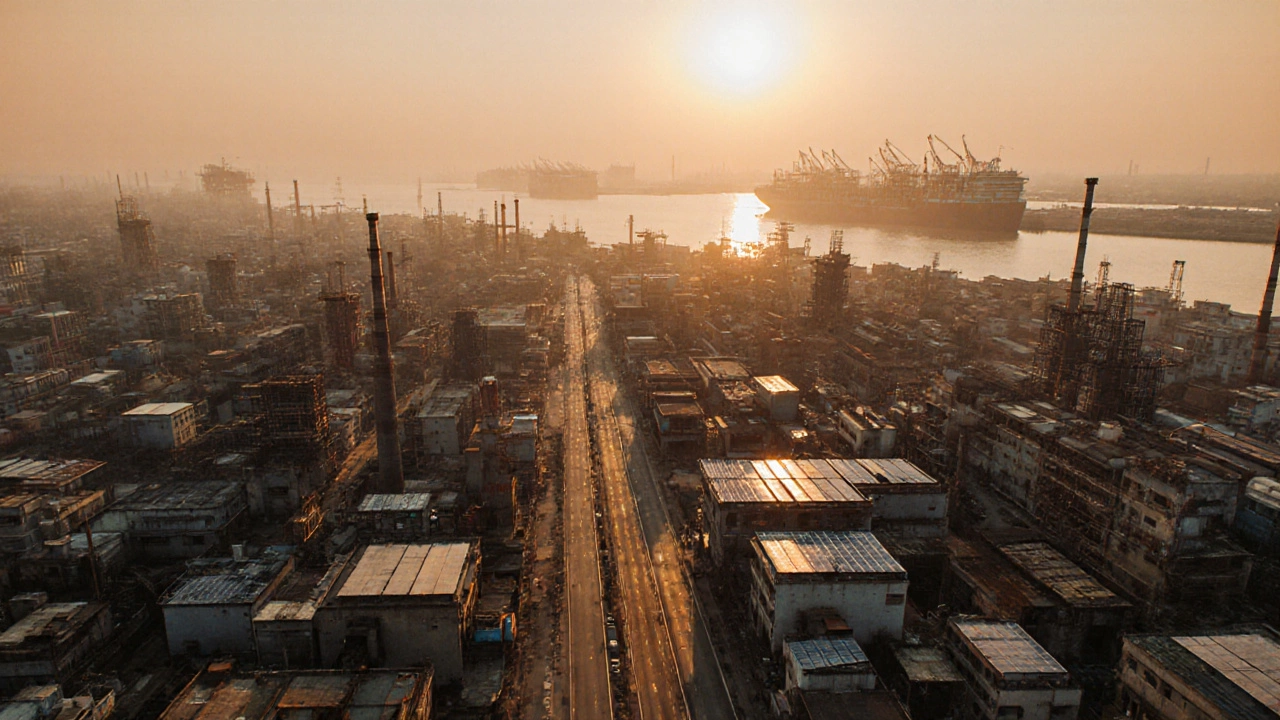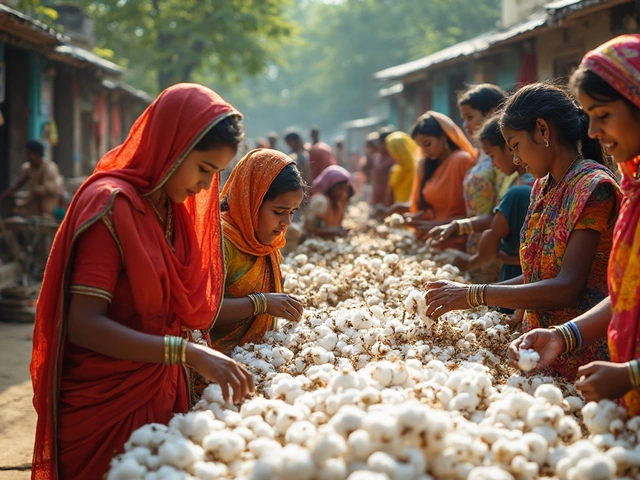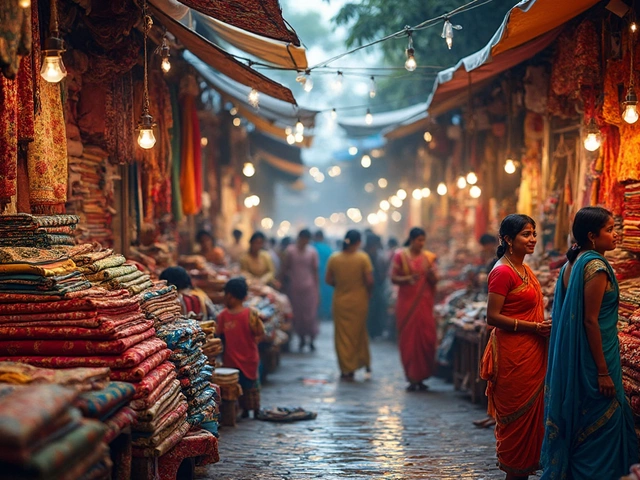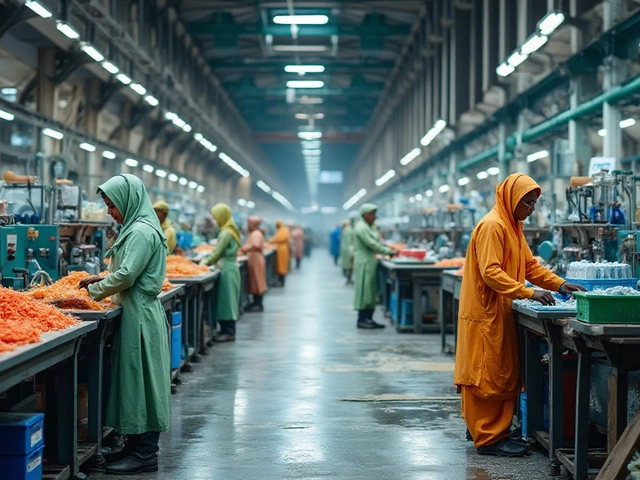Textile Export Value Calculator
Calculate Your Export Value
Based on Surat's textile industry metrics: 30,000+ units, ₹90 billion export value (15% of India's total)
Key Takeaways
- Surat, Gujarat, tops the list as the city with the highest concentration of textile units in India.
- The city accounts for over 15% of India's garment exports and hosts the largest power‑loom cluster in the country.
- Ahmedabad, Coimbatore and Bhiwandi are close competitors, each excelling in niche segments like denim, cotton fabrics and synthetic yarn.
- Strong infrastructure, proactive government policies and a skilled workforce keep Surat ahead.
- Investors should watch emerging trends such as smart textiles and sustainable production in Surat’s textile parks.
When you ask, “textile industry India - which city leads the pack?”, the short answer is Surat. The city has turned its historic silk and cotton roots into a modern, high‑volume garment hub that outpaces every other Indian metropolis. Below we unpack why Surat holds this crown, how it stacks up against other powerhouses, and what the future holds for the nation’s biggest textile hotspot.
Surat is a coastal city in Gujarat, known for its sprawling garment and synthetic‑fiber clusters. Historically a silk‑trading port, Surat reinvented itself in the late‑20th century by embracing power looms and polyester production. Today it houses over 30,000 textile units, ranging from small family workshops to multi‑billion‑rupee factories.
What Makes Surat the Textile Titan?
Three core factors give Surat its edge:
- Infrastructure that scales. The city enjoys a dedicated textile park, reliable power supply, and a logistics network that connects directly to the NhavaSheva port, shaving days off export timelines.
- Specialisation in synthetic garments. Over 70% of India's synthetic‑fabric output originates here, feeding global fast‑fashion brands.
- Policy support. Gujarat’s state government offers tax rebates, subsidised land parcels and skill‑development schemes tailored to the textile sector.
These pillars translate into hard numbers: Surat contributed ₹90billion (approximately $1.1billion) to India’s textile export earnings in FY2023‑24, a share of roughly 15% of the nation’s total.
Comparing India’s Top Textile Cities
| City | State | Primary Segment | Units (approx.) | Export Share |
|---|---|---|---|---|
| Surat | Gujarat | Synthetic garments & power looms | 30,000+ | 15% |
| Ahmedabad | Gujarat | Denim & cotton textiles | 12,000+ | 9% |
| Coimbatore | TamilNadu | Cotton yarn & knitwear | 9,500+ | 7% |
| Bhiwandi | Maharashtra | Power‑loom fabrics (mainly polyester) | 8,600+ | 6% |
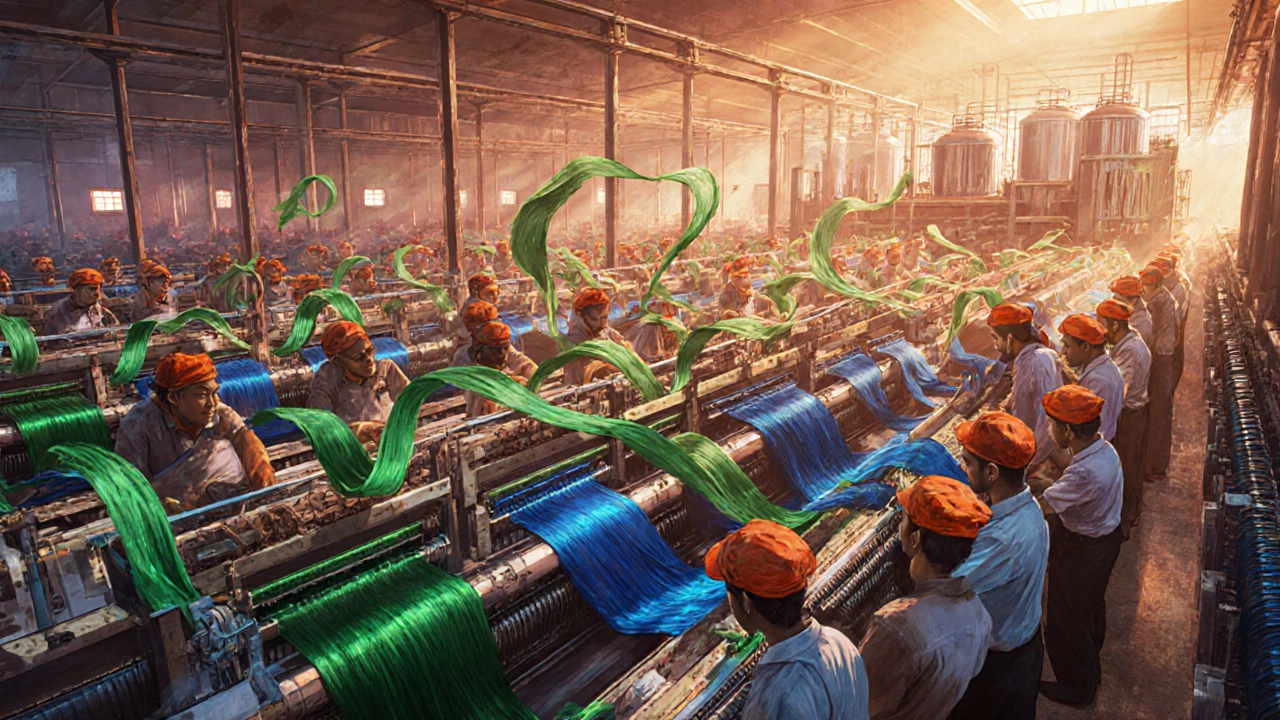
Deep Dive: Surat’s Growth Drivers
Beyond the headline stats, several nuanced drivers keep Surat ahead of its rivals.
- Power‑loom density. The city hosts the world’s largest power‑loom cluster, with an average loom capacity of 24hours/day, achieved through low‑cost electricity rates (≈₹0.35 per kWh).
- Synthetic fiber production. Surat’s proximity to chemical hubs in Dahej allows seamless supply of polyester chips, feeding downstream garment factories.
- Skilled workforce. Over 150,000 workers have completed the Textile Skill Development Programme (TSDP) launched in 2018, reducing training time for new firms.
- Export‑focused clusters. The Surat Textile Park, a 500‑acre greenfield project, offers customs‑free zones, making it attractive for international brands.
- Financial ecosystem. Local banks provide dedicated textile loans at interest rates 0.5‑1% lower than the national average, encouraging capacity expansion.
What About the Competitors?
Ahmedabad shines in denim production, supplying 40% of India’s denim yarn. Its legacy cotton farms feed a robust fabric‑weaving sector, but it lags in synthetic output.
Coimbatore, dubbed the “Manchester of South India,” excels in high‑quality cotton yarn and knitted garments. However, its export share is limited by higher logistics costs compared to Surat’s sea‑port advantage.
Bhiwandi has a massive power‑loom base focused on polyester fabrics for domestic markets. Recent water‑stress issues and power shortages have slowed its growth, prompting many manufacturers to migrate to Surat.
Future Outlook: Smart Textiles and Sustainability
Surat’s leadership isn’t just about volume; it’s also about adaptation. The Gujarat government teamed up with the Indian Institute of Technology (IIT)Gandhinagar in 2022 to launch a Smart‑Textiles Innovation Centre. Early pilots include UV‑protective fabrics and IoT‑enabled sportswear.
Environmentally, Surat’s textile park adopts zero‑liquid‑discharge (ZLD) treatment for dye‑house effluents, cutting water pollution by 80% compared to traditional mills. These initiatives position Surat as a future‑ready hub, appealing to eco‑conscious global buyers.

Checklist for Investors & Job Seekers
- Verify land availability in Surat Textile Park - priority zones offer 5‑year tax holidays.
- Assess power‑tariff contracts - low tariffs are locked for 10years for new investments.
- Consider skill‑development partnerships - TSDP graduates are pre‑trained for loom operation.
- Explore sustainable certifications - ZLD compliance can open premium export markets.
- Gauge logistics - proximity to NhavaSheva reduces freight costs by 12% vs inland hubs.
Frequently Asked Questions
Why is Surat considered the top textile city in India?
Surat boasts the highest number of textile units, dominates synthetic garment production, offers world‑class infrastructure, and contributes roughly 15% of the nation’s textile exports, outpacing all other Indian cities.
How does Surat’s export performance compare to other cities?
In FY2023‑24 Surat’s exports totaled about ₹90billion, which is more than double the combined export value of Ahmedabad, Coimbatore and Bhiwandi.
What are the major textile segments in Surat?
Synthetic garments (polyester, nylon), power‑loom fabrics, readymade apparel, and increasingly, smart‑textile prototypes.
Is Surat’s growth sustainable?
Yes. The city is investing in zero‑liquid‑discharge plants, renewable‑energy sourcing for mills, and skill‑up programs that reduce environmental impact while keeping productivity high.
What incentives does the Gujarat government offer to textile investors?
Incentives include capital subsidy up to 15%, land at 50% discounted rates in designated textile parks, 5‑year income‑tax exemption, and access to state‑run skill development centers.
How do logistics costs in Surat compare with inland textile hubs?
Because Surat is a port city, sea‑freight from the nearby NhavaSheva terminal reduces average logistics expenses by 10‑12% versus inland hubs like Bhiwandi.
Next Steps
If you’re planning to set up a textile unit, start by visiting the Surat Textile Park’s official portal to check land availability and incentive eligibility. For job seekers, enroll in the state‑run TSDP courses-many firms hire directly from the graduating batch.
Monitoring emerging smart‑textile projects and sustainability certifications will also give you a competitive edge as the industry evolves.
